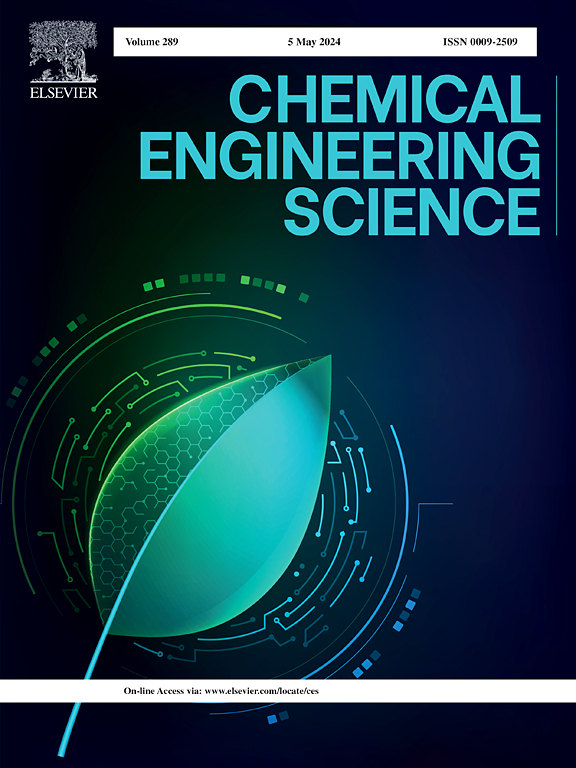间歇式反应器和连续操作微反应器中葡萄糖脱氢酶催化葡萄糖氧化的动力学研究和数学建模
IF 4.1
2区 工程技术
Q2 ENGINEERING, CHEMICAL
引用次数: 0
摘要
全球能源需求与化石燃料等传统能源的有限性之间日益扩大的差距,突显了寻找替代解决方案的必要性。氢以其高能量产量而闻名,是未来能源中很有前途的候选者。生物氢,即由生物源产生的氢,是可再生能源的一个特别有趣的选择。生物制氢的一种方法是用酶将葡萄糖转化为葡萄糖酸,伴随着辅酶与第二种酶氢化酶的再生,同时产生分子氢。在间歇反应器(V = 100 mL)和连续微反应器(V = 4µL)中,研究了假单胞菌的葡萄糖脱氢酶(GDH)与辅酶NAD+催化葡萄糖氧化的反应。为了了解该反应的机理,在批量实验中对GDH进行了动力学表征。根据获得的数据,葡萄糖氧化动力学由考虑底物抑制和竞争产物抑制的双底物Michaelis-Menten模型描述。提出了间歇反应器和微反应器系统中葡萄糖氧化的数学模型,并通过独立实验进行了验证。结果表明,微反应器的反应速度比间歇式反应器快两个数量级。这强调了微反应器通过使用GDH来提高葡萄糖生物转化效率以及生物制氢的显著潜力。本文章由计算机程序翻译,如有差异,请以英文原文为准。
Kinetic study and mathematical modelling of glucose dehydrogenase-catalysed glucose oxidation in a batch reactor and in a continuously operated microreactor
The growing gap between global energy demand and the limits of conventional energy sources such as fossil fuels underline the need for alternative solutions. Hydrogen, known for its high energy yield, is a promising candidate among future energy sources. Biohydrogen, i.e. hydrogen produced from biological sources, is a particularly interesting option for renewable energy. One method for biohydrogen production is the enzymatic conversion of glucose into gluconic acid, accompanied by the regeneration of the coenzyme with the second enzyme, hydrogenase, and the simultaneous production of molecular hydrogen. In this study, the reaction of glucose oxidation catalysed by the glucose dehydrogenase (GDH) from Pseudomonas spp. with the coenzyme NAD+ was investigated both in a batch reactor (V = 100 mL) and in a continuously operated microreactor (V = 4 µL). In order to understand the mechanism of the reaction, a kinetic characterization of GDH was performed in batch experiments. With the data obtained, the kinetics of glucose oxidation were described by a two-substrate Michaelis–Menten model that takes into account substrate inhibition and competitive product inhibition. The mathematical models of glucose oxidation in both batch and microreactor systems were proposed and validated by independent experiments. The results showed that the reaction performed in a microreactor is two orders of magnitude faster than in a batch reactor. This emphasises the significant potential of microreactors to increase the efficiency of glucose biotransformation by using GDH and consequently the biohydrogen production.
求助全文
通过发布文献求助,成功后即可免费获取论文全文。
去求助
来源期刊

Chemical Engineering Science
工程技术-工程:化工
CiteScore
7.50
自引率
8.50%
发文量
1025
审稿时长
50 days
期刊介绍:
Chemical engineering enables the transformation of natural resources and energy into useful products for society. It draws on and applies natural sciences, mathematics and economics, and has developed fundamental engineering science that underpins the discipline.
Chemical Engineering Science (CES) has been publishing papers on the fundamentals of chemical engineering since 1951. CES is the platform where the most significant advances in the discipline have ever since been published. Chemical Engineering Science has accompanied and sustained chemical engineering through its development into the vibrant and broad scientific discipline it is today.
 求助内容:
求助内容: 应助结果提醒方式:
应助结果提醒方式:


